Reading & Use of English Part 4
The FCE exam has become very important in many countries in the world. A lot of people need to take the exam for their job, education or other reasons. It doesn’t matter why you want to take the exam, but it is really important that you get some general information on how Cambridge B2 First works and also, how the different exam papers are structured. For an overview of the whole exam you can click here. If you want to know more about Reading & Use of English, click here.
I believe that you should learn more about the whole exam first, what the general requirements are and how the different papers are set up. Once you feel like you know everything you need, it is time to look at the single parts of each paper separately. I have put together detailed articles about each part of Reading & Use of English which you can find by clicking the buttons below. In each article I explain what the different parts look like, what is expected of you, what the biggest problems are and useful tips & tricks that make it easier for you to pass.
What do you have to do in part 4?
Key word transformation. You get one complete sentence and a second sentence with a gap. You have to fill in the gap so the two sentences have the same or a very similar meaning. You have to use between 2-5 words in the gap and you get one key word which you have to use in the gap, but you must not change the word. There is a total of six sentences for you to transform.
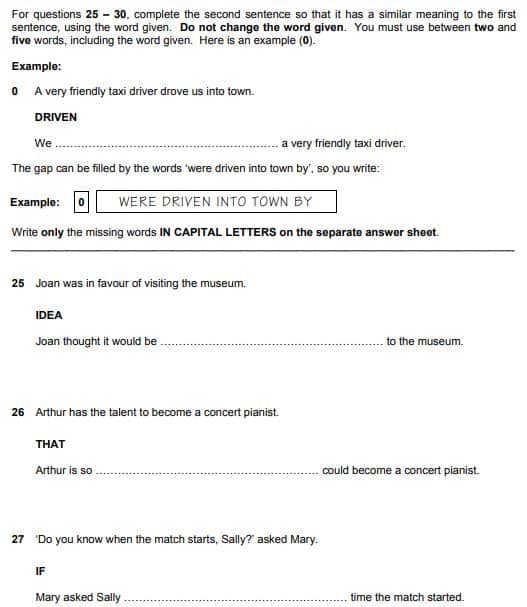
At the very top there is always an example for you. The example is the gap in the text with number 0. A lot of students get confused because they try to put the first answer in gap 0. Ignore that and start with number 25. I have seen many people getting zero marks because they made this tiny but terrible mistake.
In Reading & Use of English Part 4 you have to show that you can paraphrase (say something in other words), use synonyms and transform grammatical structures. Always remember that the two sentences have to be as similar as possible in meaning and that you must use between 2-5 words including the key word.
Part 4, together with parts 2 and 3, forms the Use of English portion of the exam. I have written an article on the structure of the whole Reading & Use of English paper which will help you to prepare for the FCE exam. Please click here to find out more.
The 3 most difficult things about this part?
Reading & Use of English Part 4 is one of the most difficult parts of the whole FCE exam as I always see the majority of my students struggling with it. Luckily, their problems are very similar so I picked out the three most common ones so you won’t make the same mistakes.
1. Candidates don’t know how to do the task
This task has some very specific requirements that candidates often forget when they are taking the exam. It is really important to keep these criteria in mind so you won’t lose marks just because of a small mistake.
In the example below you can see one complete sentence and a second one with a gap. Your job is to fill in the gap in the second sentence so both of them have the same meaning (or at least the most similar meaning possible). You have to write between 2-5 words in the gap, not more and not less. The word in capital letters is the given key word which you have to include in your 2-5 words without changing it.

So, before we move on to the next problem, here are the rules of the task again:
The two sentences have to have the same or, at least, the most similar meaning possible.
You have to write between 2-5 words in the gap, not more and not less.
You must use the key word in the gap and you cannot change it in any way.
Don’t worry if it feels like a lot of information. In the tips & strategies section I’m going to show you a full and detailed example on how to do all of this.
2. Candidates don’t know enough grammar and vocabulary
This is the one problem that you can definitely fix yourself. Study your grammar and vocabulary to prevent yourself from having panic attacks. The more confident you are in your language development, the calmer you will be in the exam. Don’t leave this to chance, start working on it now.
3. Candidates have problems with time management
This problem is very common in Reading & Use of English and not really specific to this part. You only get 75 minutes for seven parts plus transferring your answers onto the answer sheet so you should definitely have your strategies ready to go.
Tips & strategies
Even though there are so many things to study and learn before you can take FCE, there are many great tips and tricks that you can use to get the best results possible. My general advice is always to prepare properly and know exactly what you have to do. Create some habits and study regularly, develop your own language and practise the different exam tasks.
Reading every day is probably the best thing you can do if I had to choose one kind of practice. Not only do your reading skills improve with regular practice, but you can also work on your grammar and vocabulary at the same time. Read whatever you enjoy for 5-10 minutes a day and highlight a few new words or expressions. You can then look them up in a good online English dictionary or a good grammar book. I can’t stress enough how important it is for you to choose the best resources, but I have a few books and websites that I have tested that trust. You can check out all my recommendations here and I hope they will help you as much as they have supported my students.
In part 4 (and every other part, really) the best way to start is by making a plan. Knowing a step-by-step process to go through an exam task can give you a feeling of security so you stay cool and calm. The best way to go about this part looks something like the plan below:
- Read the two sentences
Analyse what information you already have in both sentences
Fill in the missing piece of information in 2-5 words
- Read the sentences again
Before you go crazy and get angry with me let me go into a little bit more detail so you now exactly what I’m talking about.
1. Read the two sentences
This first step seems so obvious, but I am asking you to read the two sentences very carefully. Be clear about what the first sentence means, what grammar you can see and if there are any specific collocations or phrasal verbs. Don’t skip this part because it is the foundation for everything else in this task.
2. Analyse what information you already have in both sentences
The next step is quite simple and it is a little bit like eliminating answers in a multiple choice test. Take your pen or pencil and cross out all those parts that you can already find in both sentences, so it looks a little bit like this:

Once you have done that you can see that there are only those structures of the sentence left which you have to change and put in the gap.
3. Fill in the missing piece of information in 2-5 words
In step 3 we have to keep two things in mind. Firstly, you have to use between 2-5 words. If you use only one or more than five, you will lose marks. Also, contractions like ‘I’m’ or ‘don’t’ are counted as two words, so please be careful. ‘Can’t’ is the only exception because it contracts ‘cannot’ which is just one word. Secondly, you have to use the key word in the gap as part of the 2-5 words without changing it.
With all of that in mind, let’s have a look at our example from before again.

Here, we have two different structures we need to transform:
- was in favour of (blue)
- visiting (green)
In the second sentence we can see part of two structures we have to use for this transformation:
- thought it would be (blue)
- to (green)
Remember that we have to use the key word ‘idea’ in our answer. When you are in favour of something it means that you are happier with one option rather than another one or we could say that we think it is a good IDEA. Ha, there we have it! Our second sentence, therefore, starts with
Joan thought it would be a good idea to…
After this structure we use an infinitive (to + base verb) so I have already added ‘to’. Now we can look at the second structure. We need a synonym of ‘visit’ that we can use with ‘to’ (green circle). For me, the best option here is ‘go to’ so our final sentence becomes:
Joan thought it would be a good idea to go to the museum.
4. Read the sentences again
It is always a good idea to check your sentences again before you write everything on the answer sheet. Go through the six items again one by one and check if the second sentences have the same meaning as the first ones. This last step is going to help you recognise little mistakes and correct them.
In our example we used five words, the key word without changing it and the two sentences are as similar in meaning as possible. 2 marks for us…yay! 🙂
Other tips
Reading & Use of English Part 4 is a special task because you can get up to 2 marks for a correct answer. If you give an answer that is half correct you can still earn 1 mark. The answers are always broken up into two parts, the one with the key word and the other one which includes everything else in the gap. In our example it looks like this:

With the red line the answer is broken up in two parts. If both of them are correct, you gain 2 marks. If you get one of the two parts right, you still get 1 mark so even if you are not sure, try to get at least one part of your answer right. It could make the difference and help you pass.
As I mentioned above, one of the most common problems is time management. A lot of candidates end up not even finishing the exam because they run out of time. Therefore, make sure that your time management is on point and that you plan in advance in what order you want to go through the tasks. For more information on this read my article about Reading & Use of English so you can concentrate on more important things.
One more thing that not many people talk about is the answer sheet. In Cambridge B2 First you have to transfer all your answers onto a separate piece of paper, which is the one that the examiners use to mark your exam. To get the highest marks possible I have two small but powerful pieces of advice for you. Firstly, always answer all the questions on the answer sheet even if you don’t know all the correct answers. As you don’t lose marks for wrong answers you should guess the ones you don’t know and just hope for a few lucky marks. Secondly, spelling is also part of the marking in Reading & Use of English so double check your spelling before writing down any answers. It would be a shame if you got an answer marked incorrect just because you misspelled it.
What about the other parts?
I have written articles about each part of the exam. If you enjoyed this one, click the buttons below to find more useful information on the rest of the exam.
Lots of love,
Teacher Phill 🙂




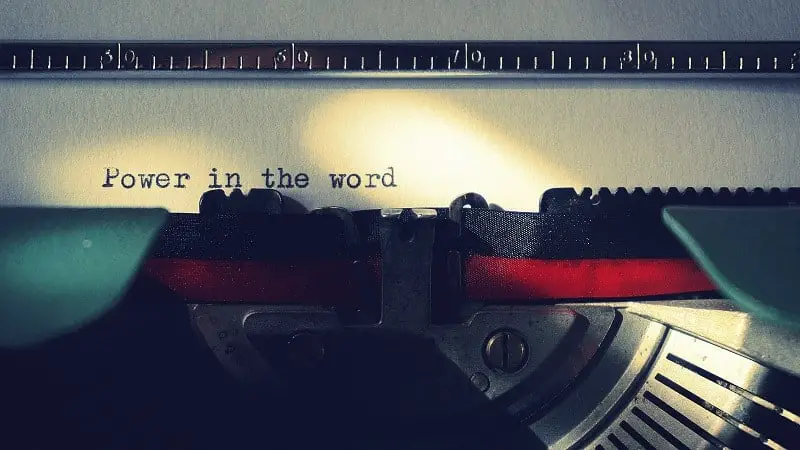



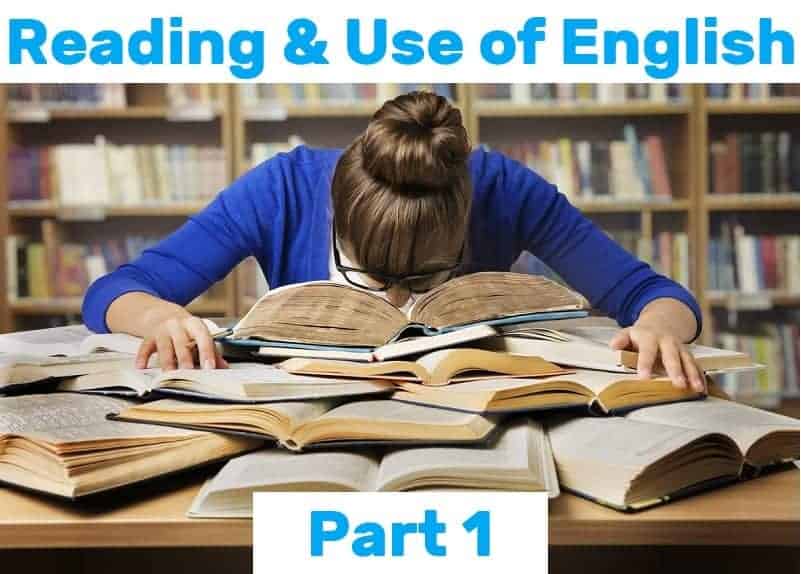
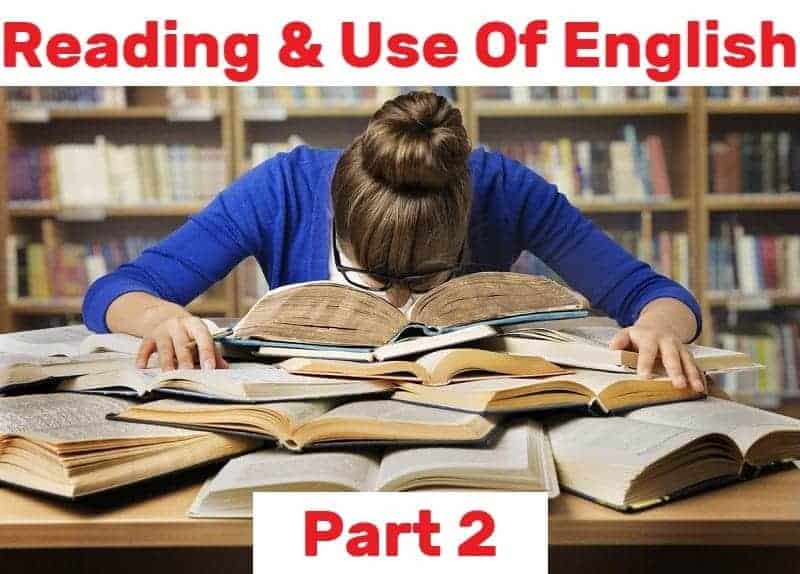

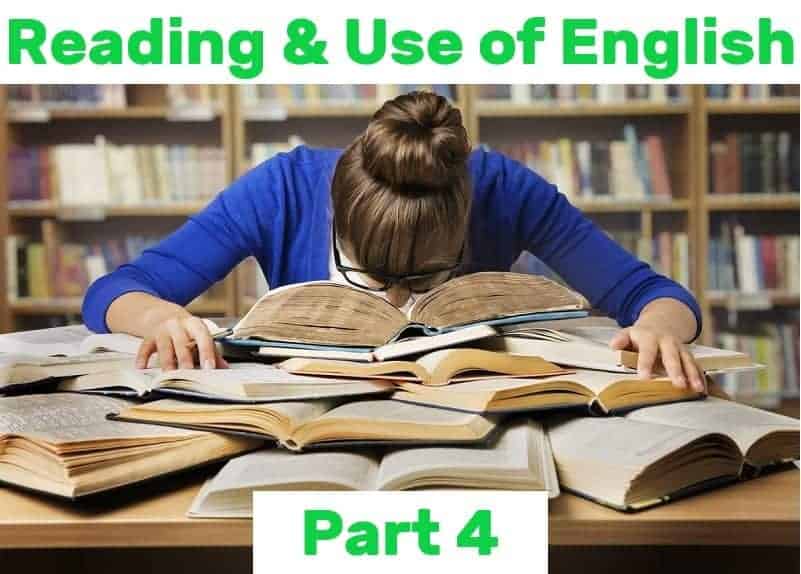
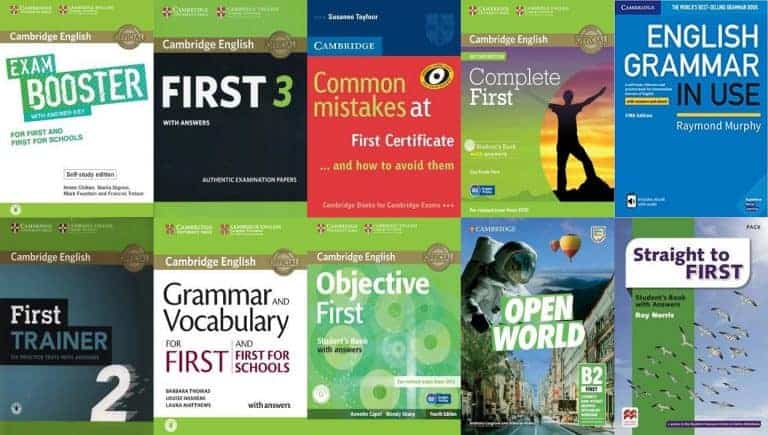
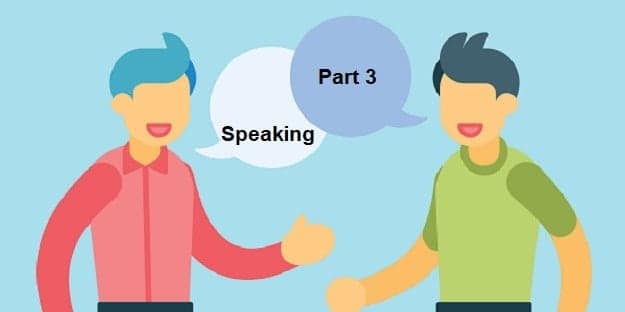
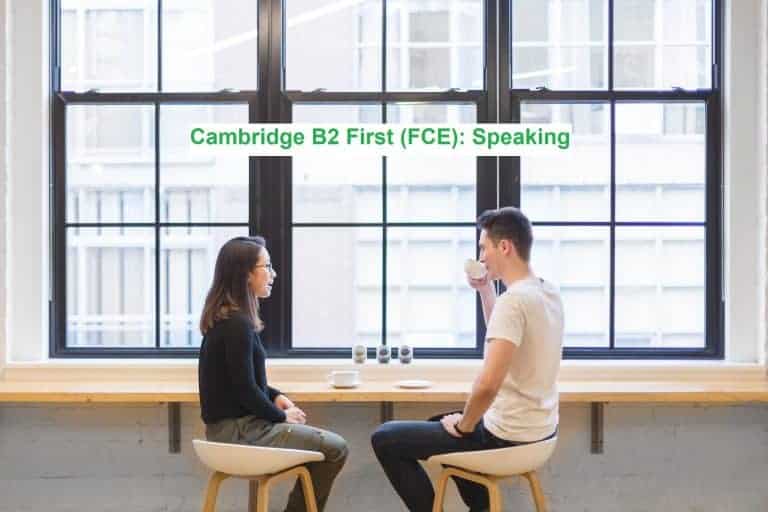
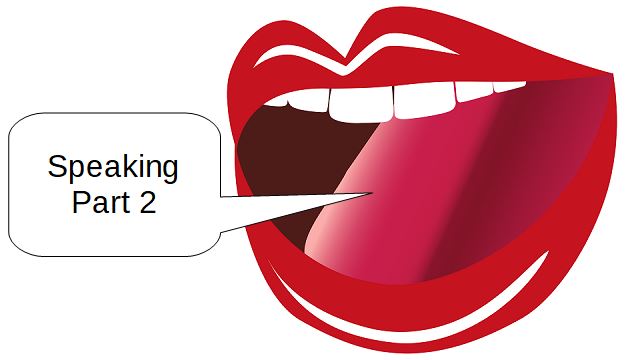
thank you for this information